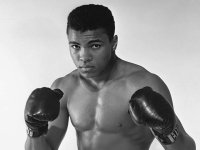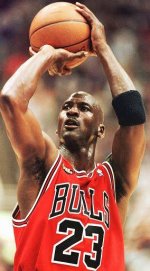The term GOAT—Greatest of All Time—in sports refers to an athlete who is considered the best ever in their field. Determining who deserves this title is often subjective and involves a blend of measurable achievements, influence, and intangible qualities.
One of the most critical factors in GOAT discussions is performance and achievements. This includes the number and significance of championships or titles won, records broken or held, and the athlete's ability to maintain consistent excellence over time. A GOAT is usually someone who not only dominated during their prime but also set new standards in the sport.
Another key aspect is the impact on the sport itself. GOATs often redefine how their sport is played, introducing innovations in technique or strategy. Their influence can extend beyond competition, inspiring future generations and increasing global interest in the sport. Athletes like Muhammad Ali, Michael Jordan, or Serena Williams didn’t just win—they transformed their disciplines.
Longevity also plays a crucial role. A GOAT is not typically a one-season wonder but someone who remained at or near the top for a long time, sometimes adapting to rule changes, evolving competition, or different team dynamics. This shows not just talent but also dedication, discipline, and resilience.
Versatility and adaptability are additional marks of greatness. Excelling under different conditions, in multiple formats, or across various roles or positions demonstrates a level of mastery that separates a GOAT from even other elite athletes.
Finally, there are intangible qualities such as mental strength, leadership, and grace under pressure. The ability to perform in the biggest moments, inspire teammates, and behave with sportsmanship can significantly enhance an athlete’s legacy.
It’s also important to consider the context of the era in which the athlete competed. Comparing players from different generations is complex due to changes in training methods, equipment, competition level, and rules. That’s why GOAT debates are often passionate and ongoing.
Just for example, In MMA (Mixed Martial Arts), the title of GOAT is highly debated, with several legendary fighters earning recognition for different reasons. Jon Jones is often cited for his remarkable longevity, dominance across two decades, and his ability to defeat a wide range of elite opponents. Georges St-Pierre (GSP) is celebrated for his historic reign as the welterweight champion, his technical brilliance, and his rare achievement of becoming a two-division champion. Anderson Silva, known for his striking artistry and long title reign, left an indelible mark on the sport. Meanwhile, Khabib Nurmagomedov is revered for retiring undefeated with a perfect 29-0 record, capping off a dominant run as lightweight champion. Each of these fighters represents a different facet of greatness, showing that GOAT status in MMA isn't defined by one path, but by a combination of dominance, impact, and legacy.
In essence, a GOAT isn’t just someone with a trophy-laden résumé—they’re an icon who elevated their sport in a lasting and unforgettable way.
One of the most critical factors in GOAT discussions is performance and achievements. This includes the number and significance of championships or titles won, records broken or held, and the athlete's ability to maintain consistent excellence over time. A GOAT is usually someone who not only dominated during their prime but also set new standards in the sport.
Another key aspect is the impact on the sport itself. GOATs often redefine how their sport is played, introducing innovations in technique or strategy. Their influence can extend beyond competition, inspiring future generations and increasing global interest in the sport. Athletes like Muhammad Ali, Michael Jordan, or Serena Williams didn’t just win—they transformed their disciplines.
Longevity also plays a crucial role. A GOAT is not typically a one-season wonder but someone who remained at or near the top for a long time, sometimes adapting to rule changes, evolving competition, or different team dynamics. This shows not just talent but also dedication, discipline, and resilience.
Versatility and adaptability are additional marks of greatness. Excelling under different conditions, in multiple formats, or across various roles or positions demonstrates a level of mastery that separates a GOAT from even other elite athletes.
Finally, there are intangible qualities such as mental strength, leadership, and grace under pressure. The ability to perform in the biggest moments, inspire teammates, and behave with sportsmanship can significantly enhance an athlete’s legacy.
It’s also important to consider the context of the era in which the athlete competed. Comparing players from different generations is complex due to changes in training methods, equipment, competition level, and rules. That’s why GOAT debates are often passionate and ongoing.
Just for example, In MMA (Mixed Martial Arts), the title of GOAT is highly debated, with several legendary fighters earning recognition for different reasons. Jon Jones is often cited for his remarkable longevity, dominance across two decades, and his ability to defeat a wide range of elite opponents. Georges St-Pierre (GSP) is celebrated for his historic reign as the welterweight champion, his technical brilliance, and his rare achievement of becoming a two-division champion. Anderson Silva, known for his striking artistry and long title reign, left an indelible mark on the sport. Meanwhile, Khabib Nurmagomedov is revered for retiring undefeated with a perfect 29-0 record, capping off a dominant run as lightweight champion. Each of these fighters represents a different facet of greatness, showing that GOAT status in MMA isn't defined by one path, but by a combination of dominance, impact, and legacy.
In essence, a GOAT isn’t just someone with a trophy-laden résumé—they’re an icon who elevated their sport in a lasting and unforgettable way.



